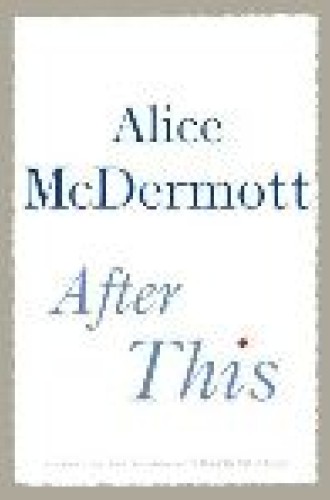After This
There are some writers—a handful, a very few—who by looking intently and penetratingly at one place reveal piercing things about all places and all people, and so paradoxically they are the very antithesis of regional writers. Among them: Faulkner on Mississippi, Walker Percy on Louisiana, Steinbeck on California—and Alice McDermott on Irish Catholic New York. After This, her sixth novel (her fourth, Charming Billy, won the National Book Award), not only cements her reputation as one of our best novelists, but affirms the fact that no other fiction writer has caught the dreams and drearies, the grace and grit, of the urban American Irish Catholic experience with her resonance and power. There are superb books about that milieu—Edwin O’Connor’s The Last Hurrah foremost among them, perhaps—but in catching the music of many hearts and the whole complex web of religious, ethnic and class relationships of the American Irish in the 20th century, McDermott has no peer.
After This is the most sweeping of her books. It covers some three decades in the life of Mary and John Keane and their four children, from just after World War II to just after the Vietnam War, and in telling the story of family and neighbors, marriages and births, errors and exits, it conjures a whole American time and culture, the yearning for peace of the 1950s, the thousand warring confusions of the 1960s. But the Keanes—as they experience war, college, Europe, childbirth, struggles with a changing church—are no stick figures drawn to portray types. They are sweetly and painfully real: an oldest son supplanted by his brother, a mother enduring a draining friendship for reasons she cannot articulate, a father haunted by his war, a church buffeted by modern airs. And even the smallest characters are carved of bone and sweat—like the neighbor boy Tony Persichetti returning from Vietnam with a shaved head and a heroin habit, hiding his drugs in the attic.
Some chapters in After This are so exquisitely drawn that they could stand alone as short stories of the first rank—on Mary Keane giving birth to her final child in her living room, a day at the World’s Fair to see the Pietà, or a family outing at the beach. Let me choose the last paragraph of the beach scene to hint at the clarity and lucidity of McDermott’s prose, and also the way it shimmers with foreshadowing and heart-weight:
“Let’s just go,” Jacob added, fighting tears. [He is the oldest son, perhaps eight years old here.] His face was once more turned to the window. “Let’s get home,” unable to keep the crimp of fear out of his voice. Michael [the second child] leaned forward, looking toward him across his sister’s lap, and his mother saw that his lips were pursed with either the sour aftertaste of the plum or the sharp phrase of an insult, a tease. She watched him until he sat back again, thinking better of it. He understood, even then, that he could repeat word for word something his father had already said about some weakness in his brother and still be reprimanded for it as severely as if he alone had let the cat out of the bag.
After This is not wholly perfect; its energies flag as the book lengthens (although it ends with two gentle and powerful scenes you will long remember). But in a world where so many books are so very long to so little effect, to snip at McDermott for lacking economy would be an inky sin, and to carp at a novel so close to being a masterpiece would be plain foolish. It’s terrific—and to be able to say that, after the startling quality of Charming Billy and Child of My Heart, is a delight.





